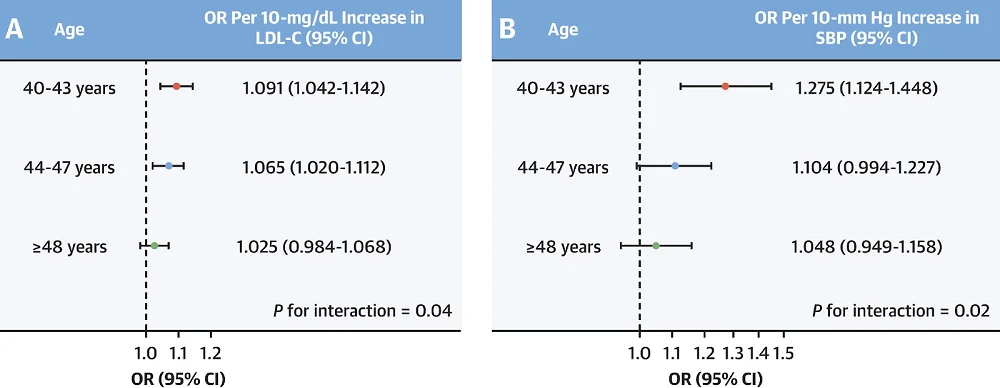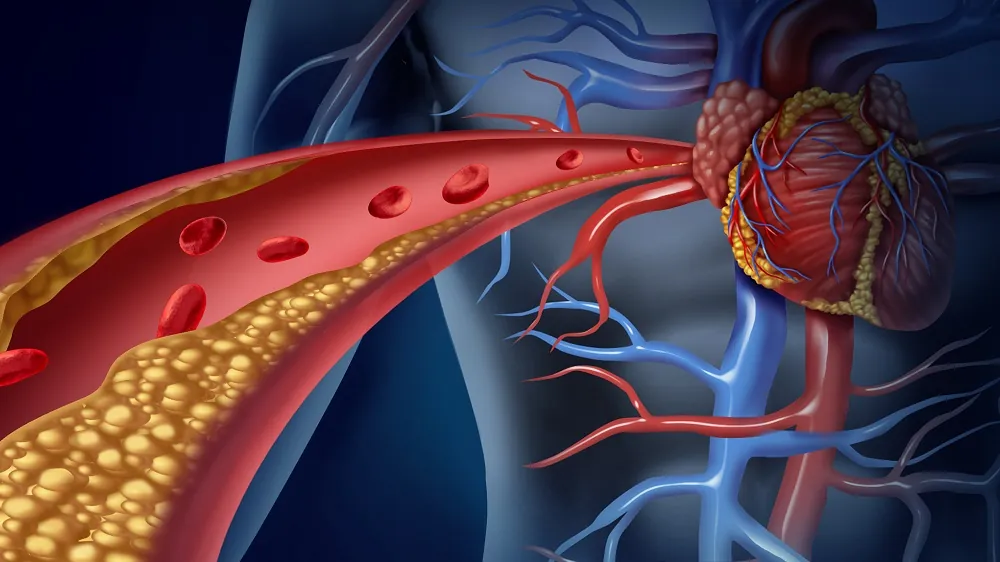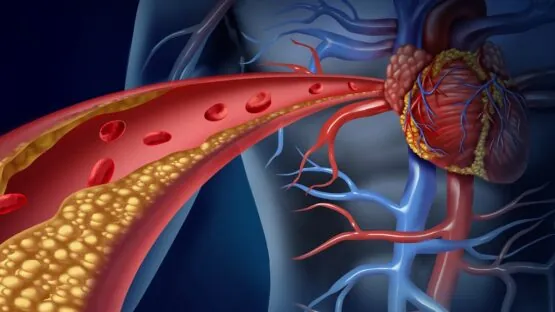A new study suggests that increases in LDL cholesterol and systolic blood pressure elevate the risk of atherosclerosis progression more in younger than in older people. The good news is that this can be reversed [1].
Creeping atherosclerosis
Atherosclerosis is a major risk factor for cardiovascular disease [2], the primary cause of death in the developed world. Modern medicine has developed techniques to bypass blocked arteries, and drugs, such as statins, that lower the levels of “bad” LDL cholesterol can decrease cardiovascular disease incidence. However, there is a growing understanding that not nearly enough attention is given to preventing atherosclerosis in the first place, including by lifestyle interventions.
This new paper is based on the unique Progression of Early Subclinical Atherosclerosis (PESA) study, a collaboration between the Spanish Centro Nacional de Investigaciones Cardiovasculares (CNIC) and the Santander bank. Back in 2009, more than 4000 healthy middle-aged Santander employees in Madrid volunteered to provide blood samples and undergo noninvasive analysis of the carotid, femoral, and coronary arteries and the aorta. “The PESA study has already made important contributions to our understanding of cardiovascular disease and is considered the most advanced study of its kind in the field,” said Dr. Valentín Fuster, CNIC General Director and Physician-in-Chief at Mount Sinai Medical Center in New York.
Subclinical atherosclerosis is the long asymptomatic phase of the disease that, today, mostly flies under doctors’ radar. According to the study’s authors, it can progress even if LDL cholesterol levels and blood pressure are only slightly elevated.
The youngest are the most vulnerable
At baseline, the participants had a median age of 45 years, and the median follow-up time was 6 years. 44% were diagnosed with subclinical atherosclerosis, an alarming number that illustrates just how widespread this clandestine disease is. By the end of the follow-up period, the incidence increased to 58%.
Most participants remained stable during the follow-up, but 33% experienced worsening of their atherosclerosis clinical pictures; this does not necessarily mean that they went from undiagnosed to diagnosed. Importantly, a small but not insignificant number of people (123) had regression of atherosclerosis.
Progression of the disease was most strongly associated with smoking, LDL cholesterol levels, systolic blood pressure, and the participant being male. Conversely, the strongest predictors for regression were being a nonsmoker, female sex, and lower levels of fibrinogen, an inflammatory protein that has been reported to be a strong risk factor for cardiovascular disease [3]. These were followed by younger age and lower LDL cholesterol.
However, arguably the most interesting finding concerned age. The odds of atherosclerosis progression were more strongly associated with increases in LDL cholesterol and blood pressure in the youngest part of the cohort. With every 10 mg/dL increase in baseline LDL-C, the increase in atherosclerosis progression risk was 9% in participants aged 40-43 years, 6.5% for 44- to 47-year-olds, and 2.5% for people aged 48 and up. Similarly, for every 10 mmHg increase in baseline systolic blood pressure, odds of atherosclerosis progression grew by 27.5%, 10.4%, and 4.8% for those three age groups, respectively.

The case for earlier prevention
As the authors note, it appears that at a younger age, arteries are actually more vulnerable to pathological changes that eventually lead to atherosclerosis. Commenting on the study’s results, Dr. Fuster said that “screening for subclinical atherosclerosis from an early age together with aggressive risk-factor control could help to reduce the global burden of cardiovascular disease.” This is an ‘I told you so’ moment for geroscience, which advocates for early diagnosis and mitigation of age-related pathologies.
According to cardiologist Guiomar Mendieta, the first author of the study, “the other key finding of this study is that atherosclerosis, previously believed to be irreversible, can disappear if risk factors are controlled from an early stage.” However, more research is needed to identify the factors that causally lead to atherosclerosis regression. Several studies have pointed to the possibility of atherosclerosis regression following long-term lifestyle interventions [4].
Over 6 years, subclinical atherosclerosis progressed in one-third of middle-age asymptomatic subjects. Atherosclerosis regression is possible in early stages of the disease. The impact of LDL-C and SBP on subclinical atherosclerosis progression was more pronounced in younger participants, a finding suggesting that the prevention of atherosclerosis and its progression could be enhanced by tighter risk factor control at younger ages, with a likely long-term impact on reducing the risk of clinical events.
Literature
[1] Mendieta, G, Pocock, S, Mass, V. et al. (2023). Determinants of Progression and Regression of Subclinical Atherosclerosis Over 6 Years. J Am Coll Cardiol., 82 (22) 2069–2083.
[2] Frostegård, J. (2013). Immunity, atherosclerosis and cardiovascular disease. BMC medicine, 11(1), 1-13.
[3] Montalescot, G., Collet, J. P., Choussat, R., & Thomas, D. (1998). Fibrinogen as a risk factor for coronary heart disease. European heart journal, 19, H11-7.
[4] Ornish, D., Scherwitz, L. W., Billings, J. H., Gould, K. L., Merritt, T. A., Sparler, S., … & Brand, R. J. (1998). Intensive lifestyle changes for reversal of coronary heart disease. Jama, 280(23), 2001-2007.



